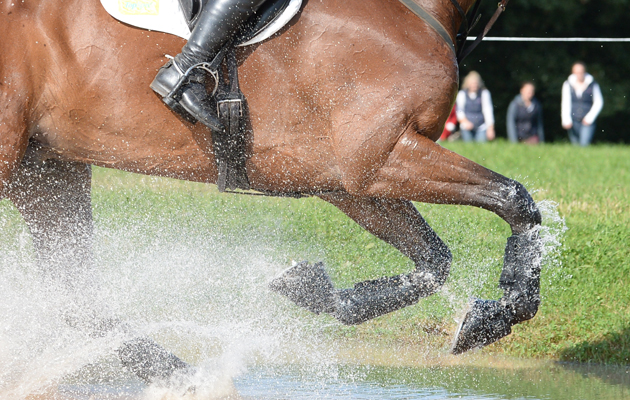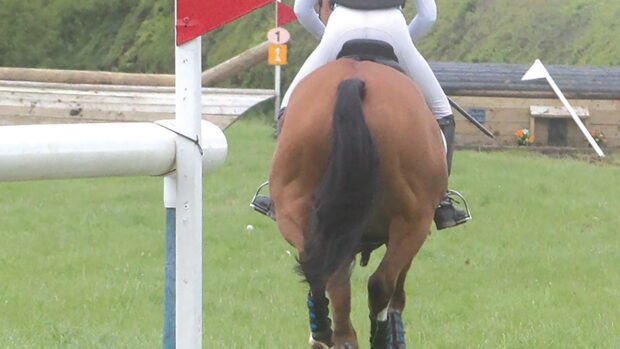CONCERNS about the depleted Scottish eventing calendar have been discussed – with hopes new events could be on the horizon.
Last month Glamis Castle organisers announced their British Eventing (BE) fixture (5–6 August) will not run this year, owing to the “hard reality of running a greenfield site with limited ability to offset rising costs and the uncertainty of major sponsorship”.
This meant Scotland’s 2023 eventing calendar would consist of just seven fixtures at five venues, including the international at Blair Castle – compared to 13 fixtures at 10 venues in 2013. Since 2018 the calendar has lost Hendersyde, Aswanley, Scotsburn, Eglinton, and Burgie.
H&H has reported on the decreasing Scottish calendar, and has now asked stakeholders about the challenges.
BE Scotland rider representative Grace Moran stepped down last month owing to frustration that there is “no real drive” from BE for new events in Scotland. She said she was told by BE there was “no room” in the calendar for new events.
“I was told they have to ensure events run to capacity to make it viable for organisers, and if we introduce more events there is a chance this will dilute entries,” she said.
“I get the logic, but I think it’s short-sighted of BE as to where the sport goes, because at the moment Scottish events are running to capacity. But where’s the growth? Where’s the encouragement for new members? Riders aren’t going to join if we keep losing events.”
Grassroots eventer Marion Dreelan, who is launching Aberdeenshire equestrian centre Bogenraith Equestrian Ltd told H&H she believes the “pressure and expectations” of holding events in Scotland falls on landowners or organisers.
“They appear to bear the brunt of the stress and financial strains. It’s not just months prior preparing the ground and fences to the required standard of safety, it’s the aftermath of reinstating potentially damaged ground and fences,” she said.
“There’s a lot behind the scenes – it’s financially draining and it gets to the stage they’re not making enough money to cover costs, hence they have to tap into sponsorship, which is so vital in helping to host BE.”
But Mrs Dreelan added that some people in Scotland are “starting to question” why they are paying the same membership as those in England for limited events .
“To only have seven BE events in Scotland is shocking. As an amateur you ask: ‘Am I prepared to drive all the way to Warwick Hall in Cumbria or Alnwick in Northumberland just to get a ‘fun’ cross-country run?’,” she said.
Kirriemuir and Glamis Castle organiser James Helyer told H&H costs have gone up “astronomically”.
“It’s not BE’s fault, it’s the nature of what’s happening in the economy. I don’t know how you pass costs on, you can’t pass them on to the competitor,” he said.
“Looking at our costs for Kirriemuir (9 April): we own all our infrastructure, had 250 horses, but even then it is becoming a marginal event to run. It’s just prohibitive. Our bill was nearly £500 for sand, £1,100 for entries and scoring, £500 for paint, £1,500 to £2,000 for medical cover. We will have to look very hard at the end of the season with BE.”
Mr Helyer said BE “had not helped” by introducing a rule that stops them running their unaffiliated event until two weeks after their BE fixture. He said this was a “major hurdle” as this was the “only way as a peripheral event, to make the job pay”. BE told H&H the governing body wants to “encourage everyone to event under the BE umbrella and to make this easier” and BE developed GO BE, designed to give non-members a way to compete without the need of buying membership.
BE Scotland chairman John White told H&H BE Scotland is “strengthening” its committee, with a view to developing the eventing calendar in Scotland.
He added that the central belt is not as badly affected as the north, as it is closer to events in the north of England.
“There is work going on to hold an event in Morayshire, and I’ve been given the name of another estate we’re hoping to speak to about possibly holding an event,” he said.
“The trouble is unless you’re getting hundreds of entries it’s difficult to make events pay. Everything has gone up; medical costs, insurance, lots of private landowners have raised rent. I don’t think everyone knows how difficult it is to put on an event.
“The other change is that more events are run by professional businesses. I think, especially in the north of Scotland, we’re going to have to put the clocks back and set up local committees to run events, not necessarily for profit.”
BE CEO Helen West told H&H “the door is 100% open” to reinstating events in Scotland and BE will do “everything it can to help”. She acknowledged the concerns, and said these are shared by other peripheral regions. For example, there are only three events in the southwest of England.
“It’s a constant challenge that’s always been there. Showjumping and dressage have the same challenges in terms of competitions in places like Scotland, Norfolk, and Cornwall. It’s supply and demand, and viability for organisers versus opportunities for membership,” she told H&H.
“It’s chicken and egg. Arguably if there aren’t events why would you join, but on the flip side for organisers, having good entries provides the viability and sustainable business model.”
Mrs West confirmed that if numbers decline, this only makes the situation worse.
“Historically BE would have subsidised the more peripheral areas. For example in terms of encouraging new events BE would have been able to say ‘If you only get 120 entries, we’ll be able to subsidise you by X’. There were ways to bridge the gap, but the simple truth is there is no money to do that now. It’s costing BE to put sport on – and it’s no secret BE has eaten through its reserves,” she said.
“In terms of being able to invest into areas, at the moment we can’t. But moving forward, strategically that is what needs to happen to get that peripheral representation and help events and help with sustainability.
“What we are bringing to the table has gone up in cost horrifically, and we’ve tried hard not to pass that on so we froze membership and organisers’ affiliation fees this year. But we had to absorb hefty increases, so that means there isn’t extra money to help subsidise.”
You might also be interested in:

Scotland left with just seven British Eventing fixtures as popular horse trials cancels

‘Many future champions have cut their teeth on the hills’: much-loved event calls time after 45 years

Scotland loses two popular British Eventing venues
The venues had fixtures on the BE calendar for 19 and 15 years respectively.

Subscribe to Horse & Hound magazine today – and enjoy unlimited website access all year round
Horse & Hound magazine, out every Thursday, is packed with all the latest news and reports, as well as interviews, specials, nostalgia, vet and training advice. Find how you can enjoy the magazine delivered to your door every week, plus options to upgrade your subscription to access our online service that brings you breaking news and reports as well as other benefits.




